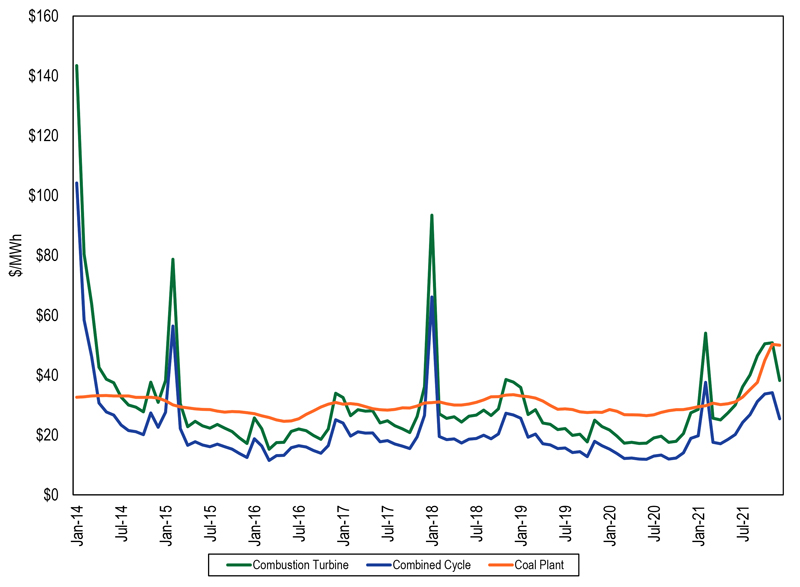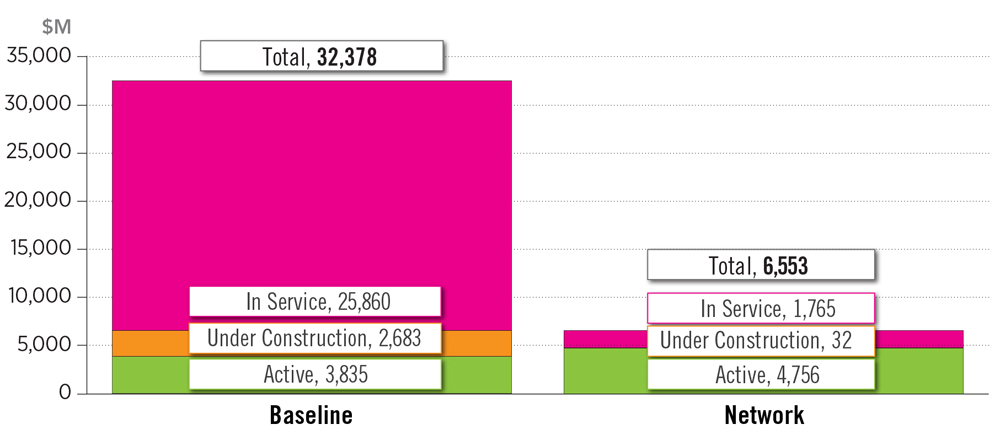Outgoing Western Power Pool (WPP) President Frank Afranji envisions a deepening relationship between his organization and WECC as the WPP rolls out its Western Resource Adequacy Program (WRAP) over the next two years.
On the cusp of retiring from the WPP after leading the organization for four years, Afranji shared his views on the WRAP at a WECC Board of Directors meeting last Wednesday.
“This is probably the last presentation I make before I retire at the end of this month … and I’m sure many people out there are looking forward to seeing me gone,” he joked.
The WRAP came about because of a confluence of factors in the Western Interconnection, Afranji told the board. Two of those factors — the decommissioning of coal-fired generators and increased adoption of variable energy resources — largely stemmed from state clean energy policies. The third — reduced surplus hydroelectric capacity in the Northwest — was the product of that region’s load growth.
“As time passed on and loads increased, it became very evident that we’re going be heading into capacity adequacy problems,” Afranji said.
In April 2020, the WPP (then called the Northwest Power Pool) announced its intention to develop a resource adequacy program to help address looming capacity shortfalls in the West. (See Western Resource Adequacy Program in the Works.)
Two months after the WPP announced the RA effort, WECC laid out plans to redefine its own organizational mission by becoming the primary forum for discussing and tackling resource adequacy challenges in the West. (See WECC Seeks to ‘Invent’ Future with RA Forum.)
The overlapping pursuits could have spelled competition over which entity would become the authority on RA issues in the West.
Afranji anticipates a more collaborative outcome.
“In my mind, as WECC works on their own capacity assessment of the West, there is such a point of interaction on this that we have to work hand-in-glove on this, no different than we’re working with the [California] ISO,” Afranji said.
Afranji lauded WECC for being at the forefront of the Western capacity issue through its work on the Western Assessment of Resource Adequacy (a regional companion to NERC’s RA assessments), which he thinks the regional entity should continue to produce. (See WECC Warns West Heading for Resource Adequacy Shortfalls by 2025.)
“If anything, as we get the [WRAP] up and running, I think we should intensify the work, and my instructions to the staff have been always, ‘As soon as we get something that we could really say is working, we need to work closely with the WECC,’” he said.
Afranji also noted that WPP COO Greg Carrington has been asked to join WECC’s Joint Guidance Committee. “So there are many points of interconnection.”
On Track
Addressing the progress of the WRAP, Afranji said the “train is on the track, and it’s moving.”
“I have to say we ended up with an amazing group of folks working on this probe project from across the West.”
Afranji explained that the WRAP will be divided into two pieces. The first is the forward showing program, designed to demonstrate the resource adequacy and availability from participants seven months in advance of a program season.
The second piece, Afranji said, is the operational program, which will determine the WRAP’s capacity requirements.
“What are we going to need, going forward, to create these efficiencies and to have a much better planning reserve margins?” he said.
The operational component will also help WPP to determine the capacity contributions of various resources, including hydro, run-of-river hydro, pumped storage, wind and solar.
Once that part of the program is in place, participants will submit their resource portfolios to the WPP to assess deficiencies, which will need to be “cured” ahead of the operational season.
WPP teams are currently working to calculate the WRAP’s specific “qualifying capacity contributions.”
“Historically, people would just throw out a number for their own wind or their own solar or their own run-of-the-river,” Afranji said. “Our teams zeroed in on different zones, different areas, different technologies, to figure out what truly is the qualifying capacity contribution of a certain element in a certain area, so that when we do the assessment, it’s not really just a socialized number that may not really contribute much to reliability.”
Fixing a Misnomer
Richard Campbell, vice chair of the WECC board, pointed out that when the WRAP begins its binding forward showing program in 2023, major electricity consuming and producing regions will still sit outside its footprint, resulting in “suboptimization” of the RA process.
“How do you plan to sort of deal with these other large areas and entities that are outside of your purview?” Campbell asked.
Afranji said the WPP has already been meeting with CAISO regarding seams issues to ensure that their respective operations “are not going to clash or not really be in sync.”
“And certainly we’re working with SPP, because we hired SPP to be the [program operator], meaning we’re using their infrastructure to go ahead and implement the program on a contractual basis,” he said.
Afranji also explained the reason behind the Portland, Ore.-based WPP’s recent name change.
“Since 1942 we’ve been known as the Northwest Power Pool, but it started becoming very clear that this is a misnomer, because our footprint extends way beyond that … and with that the various executives of the participants urged us to really look at a name that is more descriptive of our footprint.”
The WPP currently has 44 members, 26 of which will initially participate in the WRAP.


